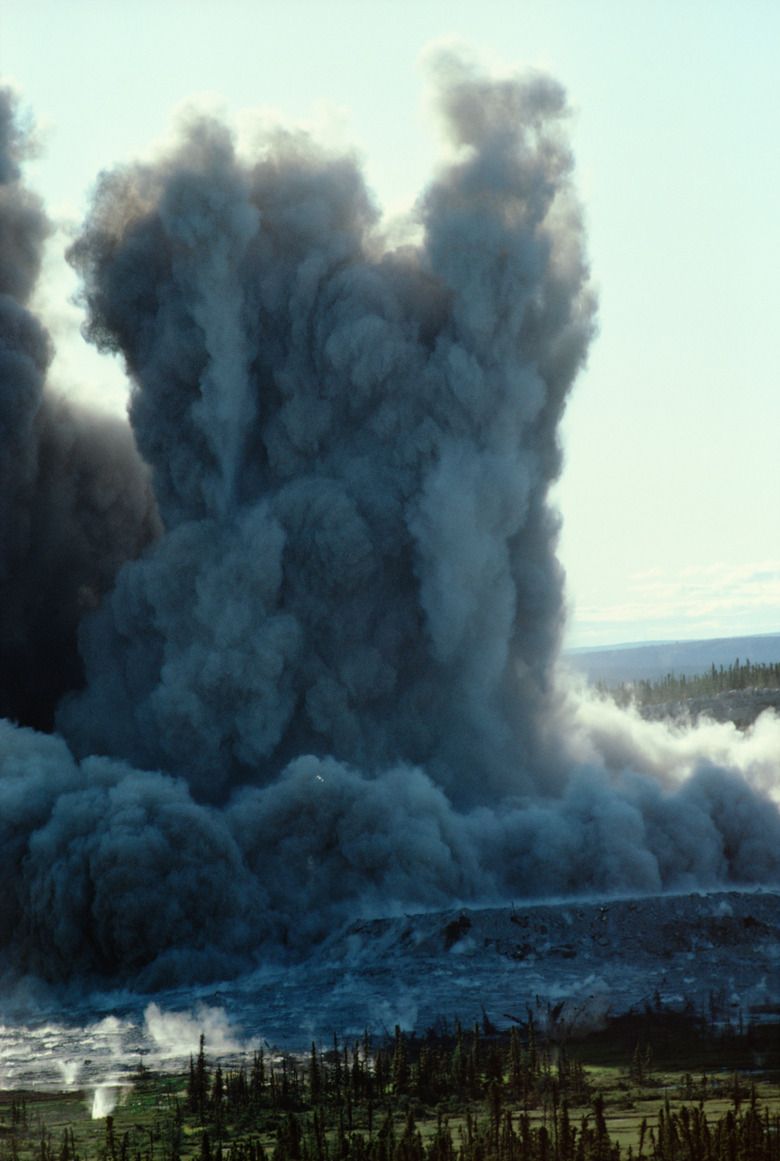The Invention Of TNT
The chemical compound trinitrotoluene — or TNT as it is most commonly known — was first created in 1863 by German chemist Joseph Wilbrand who was attempting to make a dye. To fully develop its potential as an explosive, TNT underwent several years of testing and experimentation by various chemists after its initial discovery.
A Chain of Advances
A Chain of Advances
The discovery of toluene — an aromatic hydrocarbon used as a solvent — by Pierre-Joseph Pelletier and Philippe Walter in 1837 was a necessary precursor to TNT. After the creation of Wlbrand's crude TNT, the chemists Friedrich Beilstein and A. Kuhlberg produced isomer 2,4,5-trinitrotoluene in 1870. Isomers are substances with identical molecular formulas, but different configurations of their component atoms and thus differing properties. This advance was followed by Paul Hepp's preparation of pure 2,4,6-trinitrotoluene in 1880. Germany added aluminum to this latest isomer of trinitrotoluene in 1899 to produce an explosive composition, which supplanted the commonly used picric acid as the preferred explosive compound for World War I.
A Superior Explosive for War
A Superior Explosive for War
TNT proved superior for military application as it was safer to handle than alternative compounds. TNT is not as strong of an explosive as picric acid, but when used in shells it is more likely to explode after penetrating armor instead of upon impact, thus causing maximum damage to enemy craft. A melting point of 80 degrees Celsius allowed molten TNT to be poured into shells with a lesser chance of accidental explosion. As the British and American armies adopted Germany's use of TNT, the limited supply of toluene needed to produce the explosive failed to meet increased worldwide demand.
Continued Development
Continued Development
Chemists further developed TNT by combining different substances with the compound in varying ratios in order to require less toluene, thereby stretching out a given supply of explosives. For example, the addition of ammonium nitrate to TNT created amatol which was used in highly explosive shells, and later in World War II landmines. The explosive yield of TNT was increased with the addition of 20 percent aluminum — producing another derivative called minol. One example of the long list of other explosives incorporating TNT is Composition B, used for projectiles, rockets, land mines and shaped charges.
Managing TNT's Toxicity
Managing TNT's Toxicity
The increased use of TNT heightened the need to research the substance's levels of toxicity and create safety protocols around its manufacture, storage and disposal. During World War I, exposed workers suffered from liver abnormalities, anemia and other red blood cell damage and respiratory complications. Trinitrotoluene is easily absorbed through direct contact or airborne dust and vapor, potentially causing dermatitis, eczema and yellow stains in the nails, skin and hair. Some pre-World War II studies theorized that improved nutrition would increase resistance to the compound's toxic effects, but this assertion was proven incorrect during the war.
Cite This Article
MLA
Sanders, DaVaun. "The Invention Of TNT" sciencing.com, https://www.sciencing.com/invention-tnt-15791/. 24 April 2017.
APA
Sanders, DaVaun. (2017, April 24). The Invention Of TNT. sciencing.com. Retrieved from https://www.sciencing.com/invention-tnt-15791/
Chicago
Sanders, DaVaun. The Invention Of TNT last modified August 30, 2022. https://www.sciencing.com/invention-tnt-15791/
